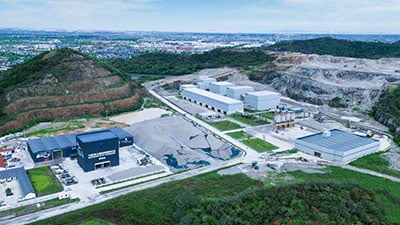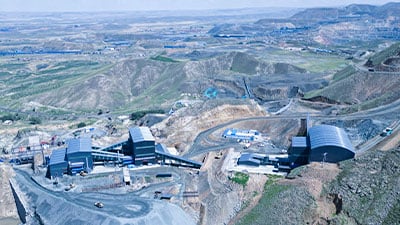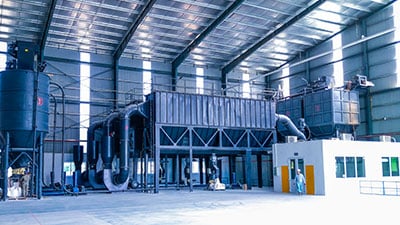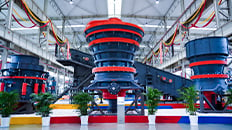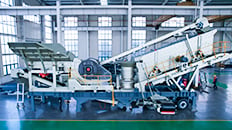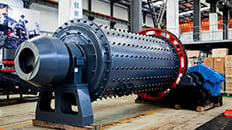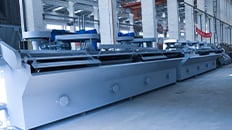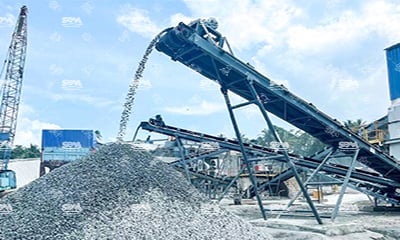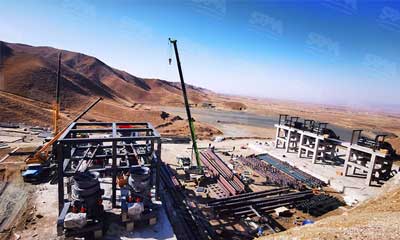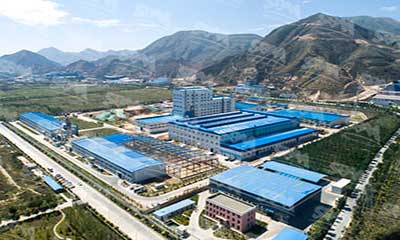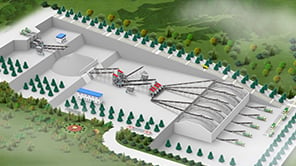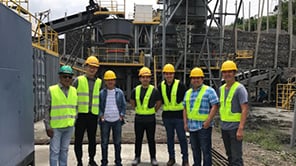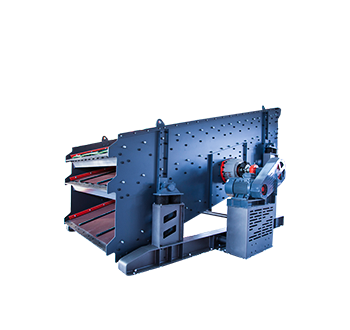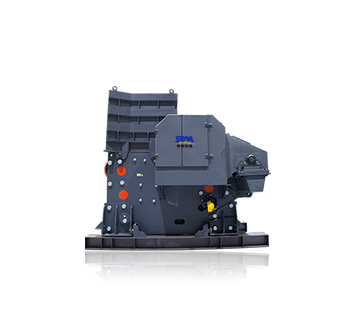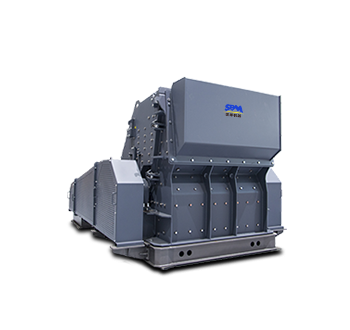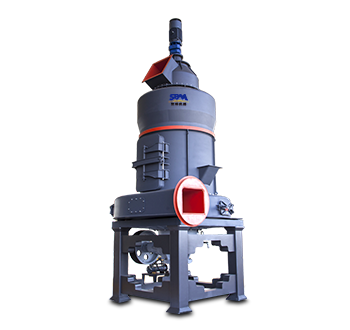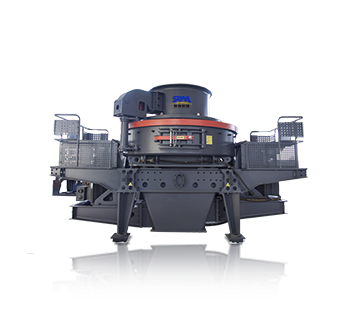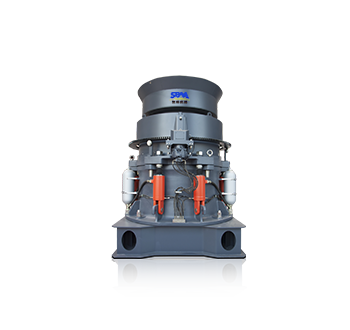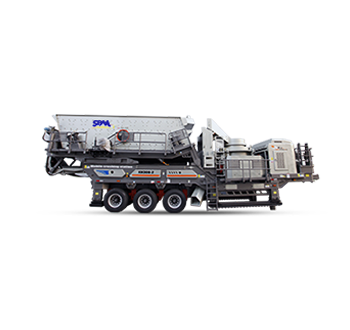Summary:This article takes a granite mining project as an example, conducting research on the raw material testing of granite overburden, the original process scheme, and the improved process scheme, proposing a complete technical solution for the preparation of washed sand from granite overburden.
The sand and gravel industry has experienced rapid development over the years and has become an indispensable basic building material. During the industry's transition into a large-scale and industrialized development phase, the handling of mine overburden has always been a key focus. How to avoid the ecological impact of overburden and how to comprehensively utilize it to enhance mine profitability are inevitable and serious issues that every mining project must consider. This article takes a granite mining project as an example, conducting research on the raw material testing of granite overburden, the original process scheme, and the improved process scheme, proposing a complete technical solution for the preparation of washed sand from granite overburden.
1. Introduction
The granite mining project has a thick overburden layer and a large volume of overburden to be handled. Due to the inability to set up a large dumping site at the project location, a production line for preparing washed sand from mining overburden has been established alongside the granite ore processing production line to improve the overall economic benefits of the project and solve the overburden disposal issue. The determination of the process scheme is mainly based on the characteristics of the material source, project features, and market conditions. Currently, there is no mature and implementable technical solution for the preparation of washed sand from granite overburden in the industry. Therefore, this study conducts research on the raw materials, sand-making process, and wastewater treatment process of the mining overburden, comparing the original process scheme with the final improved implementation scheme, providing references for the industry and similar engineering applications.

2. Raw Material Characteristics
The ore in this project area is medium to fine-grained amphibole biotite granite diorite, characterized by a gray color and a medium-fine-grained granite structure with a blocky structure. The mineral composition primarily includes plagioclase, potassium feldspar, quartz, biotite, and amphibole, with SiO2 content ranging from 68.80% to 70.32%. The ore is hard, with a compressive strength of 172 to 196 MPa, averaging 187.3 MPa. The overburden mainly consists of sandy clay (topsoil) and fully weathered granite, with uneven thickness distribution. It mainly comprises silty clay and sand particles, with some highly weathered fragments and isolated boulders of granite diorite. The thickness of the overburden ranges from 2.2 to 24.40 meters, with an average thickness of 11.7 meters.
To detect the sand content, clay content, and other key data of the overburden, samples were taken from three representative locations in the mining area and tested at a local testing center. The experimental data analysis indicates that the clay content in the overburden is approximately 35%, and the fineness modulus is favorable, allowing it to be classified as medium sand.
3. Production Scale and Products
Based on the mining scale, mining plan, service life, stripping progress plan, and target market for natural sand sales, the production scale for preparing washed sand from mining overburden is set at 600,000 tons per annum (t/a). With 280 working days per year and 16 working hours per day, the designed processing capacity is determined to be 220 tons per hour (t/h).
The main product is washed sand, along with by-products such as mud cakes and backfill gravel/abandoned soil.
4. Original Process Scheme
The original production line for preparing washed sand from overburden mainly includes a crushing workshop for overburden, a washed sand workshop, a washed sand storage shed, a wastewater treatment system, and belt conveyors.
After being fed by a vibrating screen, materials larger than 60 mm are crushed by a fine jaw crusher and mixed with materials smaller than 60 mm, which are then transported to a circular vibrating screen. The screening is set up in three layers, with a water spray pipe installed on the screen surface to wash the incoming materials, classifying them into three categories: >40 mm, 4.75 mm-40 mm, and <4.75 mm. Materials larger than 40 mm enter the ore production line or are sold as backfill gravel, while materials between 4.75 mm and 40 mm are crushed by a fine cone crusher and form a closed circuit with the screening process. Materials smaller than 4.75 mm are washed and then transported to the washed sand storage shed for storage and loading for shipment.
(1) Overburden Crushing Workshop
The mining overburden is transported by truck to the receiving hopper of the crushing workshop, which is equipped with a heavy-duty feeder screen with a bar spacing of 60 mm. The materials screened are crushed by a fine jaw crusher and then mixed with the material below 60 mm, which is conveyed to the washed sand workshop by a belt conveyor. After washing and screening in the washed sand workshop, materials between 4.75 mm and 40 mm are returned to the fine cone crusher, forming a closed circuit with the circular vibrating screen in the washed sand workshop.
The process employed a fine jaw crusher to break down occasional boulders and highly weathered blocks, facilitating washing and screening. With a feed rate of 220 t/h, the equipment included:
- 1 heavy-duty screen (4500×1200 mm, 220 t/h capacity)
- 1 fine jaw crusher (45 t/h capacity, <75% load rate)
- 1 cone crusher (50 t/h capacity, <80% load rate)
(2) Washed Sand Workshop
Crushed materials are transported by a belt conveyor to the circular vibrating screen in the washed sand workshop, which has a three-layer screen with a water spray pipe for washing, classifying materials into four categories: <4.75 mm, 4.75 mm-20 mm, 20 mm-40 mm, and >40 mm. Materials larger than 40 mm can be sent to a semi-finished product pile; materials between 4.75 mm and 40 mm form a closed circuit with the fine cone crusher; materials smaller than 4.75 mm are washed using a spiral sand washer and a sand washing fine sand recovery unit.
Test data indicated minimal material >4.75 mm. After crushing and screening, >40 mm material was sold as backfill gravel. The washing plant equipment included:
- 2 circular vibrating screens (260 t/h capacity)
- 2 spiral sand washers (140 t/h capacity)
- 2 combined sand washing/fine sand recovery units (each with a bucket-wheel washer, linear dewatering screen, and hydrocyclone)
(3) Wastewater Treatment System
The overburden processing line adopts a washing process, with water mainly used for washing the screening machine and sand washing fine sand recovery unit. A set of wastewater treatment equipment is configured to achieve zero discharge of production wastewater through recycling. Wastewater is collected and pumped into a thickener for concentration. During the concentration process, chemicals are added to accelerate the coagulation and sedimentation of solid particles in the thickener, achieving solid-liquid separation. The upper clear water from the thickener flows into a return water pool via an overflow channel around the pool and is recycled for washing materials in the production system; the lower concentrated slurry is gathered in the central sludge pit at the bottom of the pool through the sludge scraping facility and is then pumped into a buffer mixing pool. After uniform mixing, the slurry is pumped to the filter press workshop for pressing and drying, where the filtered clear water returns to the water pool, and the mud cake is transported by truck for sale.
The wastewater treatment system (650 t/h capacity) included:
- 1 thickener (28m)
- 4 fast-opening filter presses (800/2000 type)
This paper compares the original process scheme for preparing washed sand from granite overburden with the improved implementation scheme. By optimizing and adjusting the types and models of crushing equipment, screening equipment, sand washing equipment, and wastewater treatment equipment, the project has achieved reduced engineering investment, improved product quality, and enhanced production line stability. Currently, the washed sand production line from overburden in this project is operating well, with strong market competitiveness, thereby increasing the overall project profitability. Through this research, the aim is to explore a green and efficient process for preparing washed sand from overburden, improving product quality and project profitability while achieving energy conservation and consumption reduction, guiding the industry toward high-quality development.

